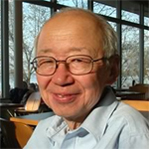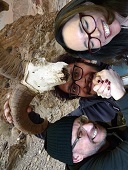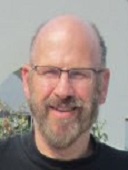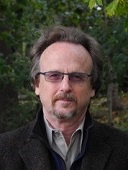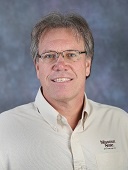All lectures are presented fully online via Zoom every Friday at 3:30 PM. The link to join the meeting is https://uwmadison.zoom.us/j/99623736476
except when otherwise indicated. Brown bag sessions start at noon on
the days there are speakers. Alumni, friends and the public are always
invited to attend.
Fall 2017 Lectures
September 15 - "What did you do in the summer?"
UW Madison Department of Geography Faculty & Grads
A panel featuring various Geography faculty & graduate students will
discuss their activities, achievements and happenings from this past
summer break.
September 22 - Madison Geography, a History, 1970 - 2000: Rememberances & Impressions
Tom Vale
UW Madison, Department of Geography
The long academic distinction of Geography at Madison continued over the
final decades of the 20th century. Memories of that time are
structured into eight themes that highlight simple facts and rumored
stories, unqualified successes and puzzling shortcomings, ongoing
harmony and occasional stress. Today's Department can look back at these
years with curiosity, maybe with appreciation, perhaps with pride.
September 29 - Going West and Going Out: Discourses, Migrants & Models in Chinese Development
Emily Yeh
University of Colorado - Boulder, Department of Geography
In 1999, China announced the launching of the Open up the West campaign,
sometimes called “Go West,” to help western China finally catch up to
the much wealthier eastern, coastal areas after several decades of
lagging behind. The same year, China also announced a “Go Out” strategy,
to encourage Chinese investment abroad. The fifteen years since then
have witnessed dramatic Chinese government investment in various
development activities in western regions of China, as well as around
the world. Though rarely considered together, I will argue in this talk
that there are significant parallels, in development discourse, the
centrality of physical infrastructure, the characteristics of Chinese
labor migration and the nature of migrant-local relations, and the
application of “models from elsewhere” in Go West and Go Out.
Considering these parallels can help shed light on Chinese development
discourse and practice, as China becomes increasingly important in the
field of development once dominated by Western countries. Finally, I
will briefly consider direct connections and convergences between the
two strategies in China’s neighboring countries of Asia and in the One
Belt One Road initiative.
October 6 - Modernity, Jews, and the City in the American Sociological Tradition, 1915 - 1934
Chad Goldberg
UW Madison, Department of Sociology
Between 1915 and 1934, Chicago School sociologists William Thomas,
Robert Park, and their students Louis Wirth and Everett Stonequist
portrayed Jewish immigrants as a quintessentially urban people who
exemplified the perils and promise of the modern metropolis. For these
thinkers, the Jewish “marginal man,” the city, and America were all
sites in which different cultures came into contact and collision. This
cultural contact and collision was, in their view, a hallmark of
modernity. The resulting disorganization made new, more expansive forms
of social control urgently necessary. From this perspective, Thomas and
Park attributed great sociological significance to the Jewish Kehillah
of New York City, an experimental attempt from 1909 to 1922 to provide
the city’s burgeoning Jewish population (mainly immigrants and their
children) with a unified and democratic community structure. The paper
concludes with a novel reinterpretation of the concept of assimilation
in relation to pragmatist concerns about social reconstruction and the
formation of a democratic public under modern social conditions.
October 13 - The Enemy Within: Criminalizing Muslim Youth in the United States
Nicole Nguyen
University of Illinois - Chicago, College of Education
In September 2015, ninth grade student Ahmed Mohamed brought a homemade
clock to his US public high school. Before he had the chance to show his
engineering teacher his latest invention, Ahmed’s English teacher
confiscated the clock and reported him to the school principal.
Believing the clock was a bomb or “bomb hoax,” the police arrested Ahmed
and transported him to a juvenile detention facility for fingerprinting
and questioning. Ahmed’s story reveals how anti-Muslim racism affixes
the “terrorist” or “criminal” label to US students perceived to be
Muslim. In this talk, I examine the countering violent extremism (CVE)
national security approach that calls on social service providers like
Ahmed’s teacher to identify and report potential terrorists. I also
explore how, similar to the coercive stressors applied to the Indigenous
and Black freedom struggles, CVE pressures Muslim leaders to view
political inclusion as the means to reduce social exclusion, racial
profiling, and state-sponsored violence, forgoing more progressive
political demands. By mapping how these practices criminalize youth and
chill political dissent, I consider how national security policies
institutionalize anti-Muslim racism and securitize community engagement.
Such work can inform radical struggles for freedom, liberation, and
self-determination.
October 20 - The Politics of Value
Jane Collins
UW Madison, Environmental Sociology & Women's Studies
Why do we measure some things and not others? How do we decide what
activities and arrangements are crucial to the health of our economy?
This talk provides an overview of Collins’ new book The Politics of
Value: Three Movements to Change How We Think about the Economy. It
explores the work of three U.S.-based social movements engaged in
“revaluation projects”—efforts to change dominant ideas about how to
conceptualize and measure what matters for the economy. It raises
questions about the relationship between struggles over economic value
and the sustainability of our ways of living.
October 27 - Protected Areas and People in Uganda: Moving Towards Win-Win? -- POSTPONED, Date TBD
David Tumusiime
Makerere University
Winston Churchill referred to Uganda as “The Pearl of Africa” in 1907.
Reasons for this reference included the wide array of beautiful and
unique life forms – including birds, insects, reptiles, and primates. In
contemporary Uganda, most of these life forms are protected and
conserved in the country’s chain of Protected Areas (PAs). These
constitute an important natural heritage, but also increasingly
identified as a vital resource for local and national development for
example through the associated tourism activities as is identified in
Uganda’s national development plan and Vision 2040. However, impacts of
establishing and maintaining these areas has for long been a contentious
issue and a recognisable threat to conservation efforts. Over the
years, several efforts have been made at many a Ugandan PAs to deliver
win-win outcomes for conservation and local people. This talk will
examine the extent to which this outcome has been achieved.
November 3 - Is There Space for Theory in Geography?
Anna Secor (Geography, University of Kentucky); Arun Saldanha
(Geography, University of Minnesota); Keith Woodward (Geography,
UW-Madison)
This panel opens the second in an annual, multi-sited Space for Theory
Workshop (in collaboration with University of Kentucky, University of
Minnesota, and UW–Madison Geography Departments) devoted to opening new
channels for the development of theoretical problems in the discipline.
Our goal is to incite and nurture a unique intellectual space in which
theory is primarily what we are doing — not in a vacuum, not without
politics certainly, but without apology. The workshops will be animated
by a range of theoretical vistas. Our impetus for coming together is a
desire for producing an excess beyond our capitalized labor in the
academy, for the promotion of intellectual engagement and the
exhilaration of thought. The workshop events will provide an opportunity
to think about what it means for geographers to “do” theory for its own
sake, that is (to borrow reflexive Deleuzian discourse), to work on
theory as something that is immanent to itself rather than to something
else (a transcendent outside that serves as its ground and legitimation –
a practice, a situation “on the ground,” etc.). What does it mean for
geographers to create and work on theory “in-itself” today? How does it
work? What might it look like? Are there regimes of problems specific to
geographers that aren’t conditioned by outsides (whether these are of
the empiricist/realist/etc. varieties)? And aren’t these dangerous
questions, anyway?
This year’s workshop will center on inhuman “things” or objects, and
questions of their ontological status in relation to humans and
themselves. Do objects function merely as extensions or amplifications
of human life? If not, should their existence be considered in a
different “light” to that of the human? Are such non-human existences
thinkable? With what differences and limits? What relation do they have
to human-produced things, such as “technical” objects? Should we expect
that technical objects and “collective individuations” might promise to
unfold more freedom/equality/joy?
November 10 - Changes to the Global Value of Ecosystem Services: A Market Failure?
Paul Sutton
University of Denver, Department of Geography
The earth consists of a diverse array of Natural Capital in the form of
functioning ecosystems. Ecosystem services are the essential and
valuable services that these ecosystems provide to humanity for free on
an annual basis. Attributing an economic value to these services
measured in dollars is presented as a useful and meaningful alternative
to valuing nature’s services at ‘zero’ or ‘infinity’. Estimates of the
global value of ecosystem services are on the order of $120 trillion per
year which exceeds the magnitude of the entire marketed economy by a
factor of two. Changes to the world’s environment as manifested in the
loss of coral reefs, the disappearance of wetlands, and deforestation
have reduced the annual value of the world’s ecosystem services by
roughly $20 trillion per year. These losses are significantly more
substantial than the losses associated with the global financial crisis.
Global estimates expressed in monetary accounting units, such as this,
are useful to highlight the magnitude of eco-services, but have no
specific decision-making context. However, the underlying data and
models can be applied at multiple scales to assess changes resulting
from various scenarios and policies. We emphasize that valuation of Eco
services is not the same as commodification or privatization. Many
eco-services are best considered public goods or common pool resources,
so conventional markets are often not the best institutional frameworks
to manage them. However, these services must be (and are being) valued,
and we need new, common asset institutions to better take these values
into account.
November
17 - From Mud to Models: Building Community-Curated Data Resources to
Study Species Responses to Past and Present Global Environmental Change
Jack Williams
UW Madison, Department of Geography
In paleoecology, community curated data repositories (CCDRs) have arisen
in response to the desire to do global-scale science from local-scale
data, which requires the careful assembly of many individual site-level
paleoecological time-series into larger networks. This talk describes
the building of the Neotoma Paleoecology Database (Neotoma,
www.neotomadb.org), a CCDR that gathers and provides a high-quality
archive for paleoecological data from the recent geological past, and
some of the current geovisualization and scientific initiatives linked
to Neotoma. These include Flyover Country (http://fc.umn.edu/), a
mobile app-based platform for viewing geological data while traveling,
and the Paleoecological Observatory Network (PalEON,
https://www3.nd.edu/~paleolab/paleonproject/), which is bringing
together paleoecologists, ecological statisticians, and terrestrial
ecosystem modelers in order to improve the model parameterization and
simulation of slow forest processes, operating at timescales of decades
to centuries.
November 30 - Synthetic Biology and the Conservation of Nature
Kent Redford
Archipelago Consulting; Irvington, NY
Synthetic biology is a broad and fast-moving field of innovation that
has the potential to change human’s relation with the natural world. It
involves the design and construction of new biological parts, and the
re-design of existing, natural biological systems. It has many
potential applications that may change human relations to the natural
world including replacing natural products (e.g. vanilla, ambergris)
with synthetic ones, reviving extinct species, and creating powerful
tools to address wicked conservation problems. Despite this promise and
the vast sums being spent on its development, synthetic biology is
virtually unknown to the conservation community. We must engage
promptly, honestly and with a broad discussion to see how conservation
perspectives can help shape this major emerging field.
Weston Lecture (Co-Sponsored by Department of Geography). Talk is
located in Room 1153 of the Mechanical Engineering Building.
Refreshments at 4:00, talk begins at 4:15
December 8 - Historical Settlement, Mining Contamination, and River Sediment Management in the Old Lead Belt, Ozark Highlands
Robert T. Pavlowsky
Missouri State University, Department of Geography
River systems respond to the patterns of geomorphic characteristics and
human activities within the watershed albeit often at different scales.
Mining-affected landscapes, in particular, reflect industrial and
transportation factors such as terrain modification, soil and water
contamination, and associated social risks. This study investigates the
linkages between the environmental history and geomorphic condition of
the Big River in southeast Missouri in order to evaluate proposed
management solutions. Large-scale mining operations in the Old Lead Belt
released excessive amounts of lead-contaminated tailings to the Big
River from 1900 to 1972. Further, agricultural land clearing beginning
after the Civil War increased flooding and soil erosion resulting in
channel disturbances and extensive sediment storage on floodplains.
Today, Big River ranks as a major contaminated river worldwide. A total
of ~157 million Mg of contaminated sediment is stored along 170 km of
the Big River, with 92% of it located in floodplain deposits that are
typically contaminated to depths of 1.5-3.5 m. Management plans for the
Big River are long-term and reflect environmental, economic, social,
and political constraints. Public responses vary due to social and
cultural factors. However, several remediation projects aimed at
reducing ecological risk and human exposure are being implemented. A
sediment budget framework is used to evaluate the scale and potential
significance of management alternatives.
